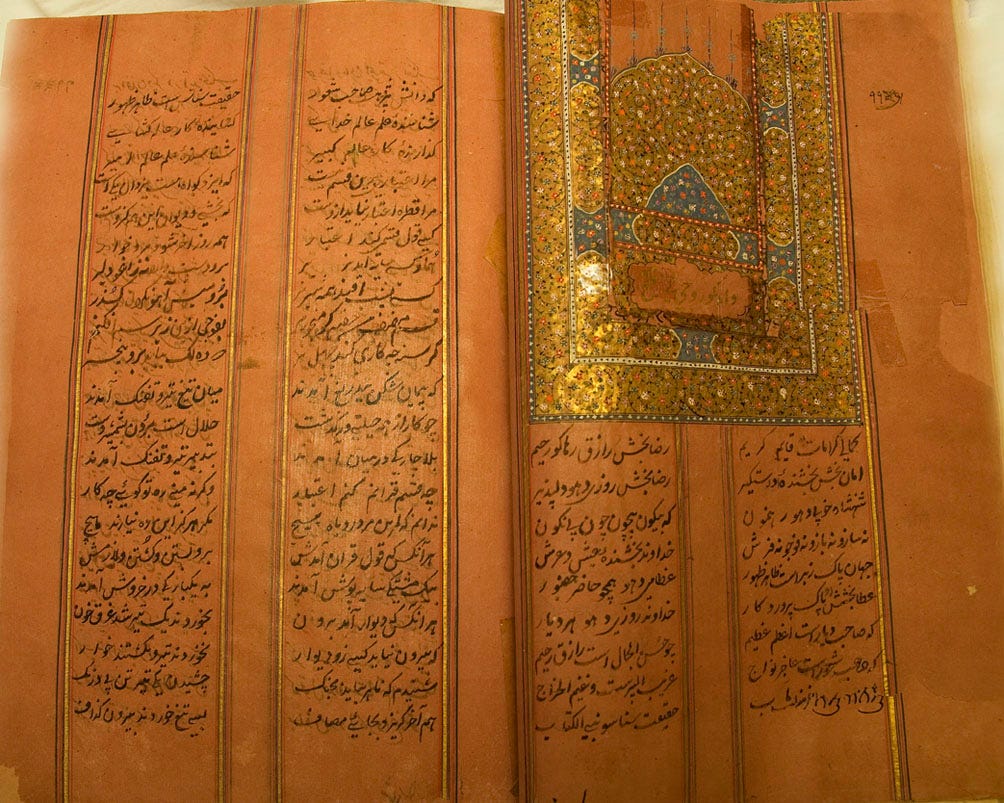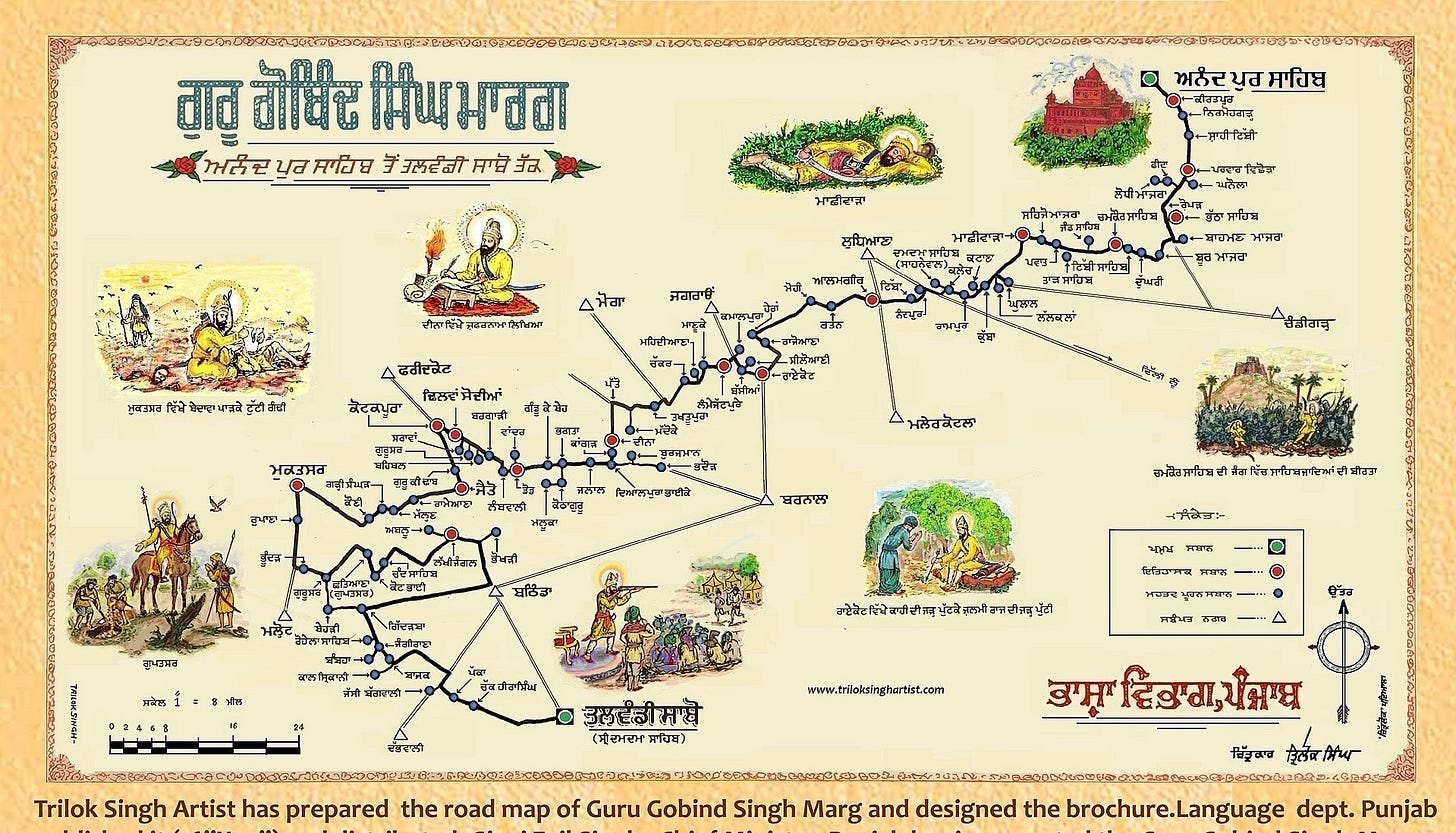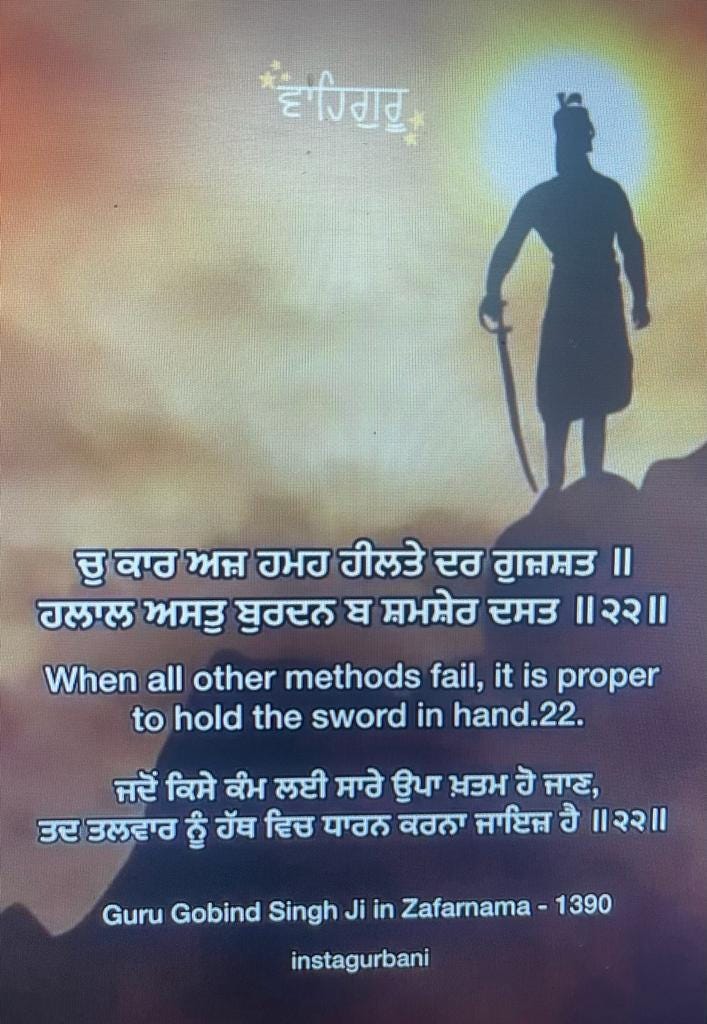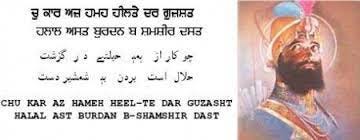Zafarnamah, the Epistle of Moral Triumph: The Death Knell of Aurangzeb
A Journey to Village Dina-Kangar, District Bathinda: Reflecting on the Zafarnamah and the Enduring Legacy of Guru Gobind Singh.

A Spiritual-cum-Emotional Journey to my Native Place.
As I set out from Chandigarh on a foggy December morning, my destination was the historical Gurudwara at village Dina-Kangar. This sacred place in Punjab, close to my ancestral village of Gumti Kalan in the Rampura Phul Tehsil of Bathinda district, holds a profound significance in Sikh history and my personal heritage as a humble member of the proud Sidhu-Brar clan, that finds mention in the Zafarnamah.
The Zafarnamah: A Letter of Spiritual Victory
The Zafarnamah, penned by Guru Gobind Singh in 1705, stands as an extraordinary epistle of victory, transcending the usual bounds of physical conquest to touch upon the profound depths of moral and spiritual triumph. Addressed to the deceitful Mughal Emperor Aurangzeb in the aftermath of the Battle of Chamkaur, this poignant letter, primarily crafted in elegant Persian verse, is a testament to the Guru's unwavering spirit amidst treachery and severe trials. It commences with a solemn invocation to the Divine, unfolds the tale of duplicity at Anandpur, eloquently recounts the valiant last stand at Chamkaur where the Guru's elder sons, the revered Sahibzadas, achieved martyrdom, bravely confronting overwhelming odds, and directly challenges the Emperor's ethics, culminating in a powerful proclamation of ethical victory. This composition not only chronicles a significant historical episode but also serves as a beacon of enduring moral courage and unshakable faith.
The Guru’s Travels: Chamkaur-Machhiwara-Jatpura-Dina-Kangar-Khidrana (Muktsar)-Damdama Sahib.
Following the fierce Battle of Chamkaur, Guru Gobind Singh found respite in the Machhiwara area of what is now Ludhiana district. It was here that Nabi Khan and Ghani Khan, two Pathans who held the Guru Sahib in high esteem, provided him shelter and sanctuary. Cloaked in the blue attire of a Muslim faqir, known locally as 'Uch da Peer', he found temporary refuge in the village of Jatpura, near Raikot, after a brief sojourn in Machhiwara. It was in this village that he received the heart-wrenching news of the martyrdom of his younger sons, a profound personal loss that he bore with stoic equanimity.
Moving on from Jatpura, he arrived at the tranquil village of Dina, where he was accorded warm hospitality and deep respect by the descendants of influential landlords, previously blessed by Guru Hargobind Ji. In Dina, having discarded the disguise of the blue robes, he composed the Zafarnamah. This defiant letter to Emperor Aurangzeb was penned after the Tenth Guru received an olive branch from the Emperor, an invitation for a face-to-face meeting in the Deccan, as one sovereign meeting another. This gesture of reconciliation from Aurangzeb is thought to have been influenced by the Guru's preceding missive, the Fatehnama, and perhaps a reflection of the Emperor's own troubled conscience as he faced the twilight of his life.
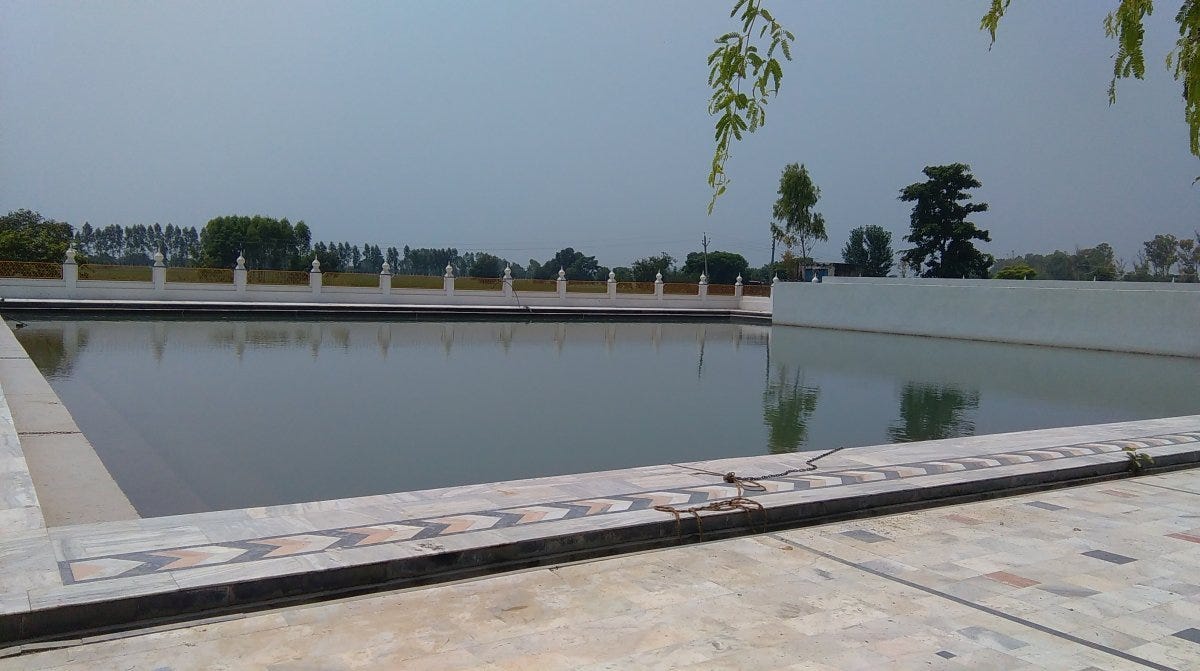
Writing of Zafarnama
Having experienced blatant treachery at the hands of the Mughal Emperor and his officials, including the Nawab of Sirhind, Guru Sahib had little reason to place trust in their word once more. In a contemplative state, he reflected upon the recent trials and tribulations to compose the historic Zafarnamah. This document, distinguished as a literary masterpiece in Persian in its own right, also holds a significant place in Sikh history for its emblematic representation of their unyielding struggle against injustice and tyranny. The epistle was then entrusted to two devoted Sikhs, Daya Singh and Dharam Singh, for delivery to Aurangzeb in the Deccan. According to traditional Sikh chroniclers, the forthright and valiant tone and tenor of the Zafarnamah's message left Aurangzeb virtually paralyzed, prompting him, from his sickbed, to command his Wazir, Munim Khan, to reach out to the Guru with a gesture of reconciliation. The Emperor's directive was sent to Delhi, carried by his mace-bearer, Muhammad Beg, along with the two Sikh messengers. Meanwhile, Guru Gobind Singh journeyed onwards to Khidrana1, now immortalized as Sri Muktsar Sahib, renowned for the ultimate sacrifice of the 'Chali Muktas' or the Forty Liberated Ones, who are honoured in the Sikh Ardaas after the mention of “Char Sahibzade”.
Emotional Connection and Historical Resonance
As I walked reverentially through the sacred precincts of the Gurudwara at Dina-Kangar, I was deeply moved by the realization that the valiant Sidhu-Brar clan, long-standing residents of this region and still present, are very honorably mentioned in this historic epistle. This hallowed site, believed to be where the Zafarnama was not only penned but possibly dispatched, stands as a vivid symbol of Guru Gobind Singh's indomitable courage and steadfast resilience. The tranquil ambiance of the Gurudwara resonated with the spirit of the Guru's words, powerfully denouncing Aurangzeb's deceit while simultaneously echoing a profound and unwavering devotion to the Divine. This experience instilled in me a profound sense of pride and a renewed appreciation for the enduring legacy of bravery and spiritual fortitude.
The Message: Universal and Timeless
The significance of the Zafarnamah extends beyond its historical context. It is a universal message of standing against tyranny and upholding truth. The Guru's words, “All modes of redressing the wrong having failed, raising of sword is pious and just,2” reflect a profound moral principle of justice. This message, coupled with the Guru's invitation to Aurangzeb to meet him in Dina-Kangar village, underlines the assurance of safe passage under the protection of the Brar clan, showcasing the Guru's strategic acumen and commitment to peace and dialogue.
Conclusion: A Journey of Enlightenment and Legacy
This visit to the Gurudwara at Dina-Kangar was more than a pilgrimage; it was a journey into the heart of Sikh history and spirituality. The Zafarnamah, with its profound message of moral courage and integrity, continues to inspire and guide. As the fog lifted, symbolizing the dispelling of ignorance and doubt, I left with a renewed commitment to uphold the values of courage, righteousness, and unwavering faith, integral to the legacy of Guru Gobind Singh.
This article is not just a personal narrative but a homage to the eternal teachings of Sikhism and the indomitable spirit of the Tenth Guru. It serves as a reminder to all, especially the youth I mentor, of the enduring power of truth and the importance of standing firmly for justice and righteousness.
As these events unfolded, Guru Gobind Singh journeyed to Khidrana, the site of a fierce battle involving forty Sikhs who had previously abandoned him during the Anandpur siege. Seeking atonement, they fought valiantly to their last breath. The Sikh Ardas commemorates them as the 'forty liberated ones' (muktas), and the battleground was henceforth known as Muktsar, the 'Pool of Salvation.'
Travelling through Punjab's Malwa region, the Guru's teachings began to rejuvenate the local populace. His influence grew, and the Sikh faith firmly established its roots. It was near Talwandi Sabo, at a place he named Damdama, or 'the resting place,' where he laid down his arms to rest, but not before he had built a substantial army. Here, during a nine-month stay, he initiated thousands into the Sikh fold and compiled the final version of the Adi Granth, incorporating the hymns of his father and the Ninth Sikh Guru, Guru Tegh Bahadur. This site blossomed into a centre of scholarship and learning, comparable to Kashi (Varanasi).
Departing from the tranquility of Damdama, Guru Gobind Singh embarked once more on his travels, to confront the ageing Aurangzeb, unaware of the profound impact the Zafarnamah had made. Arriving in Rajputana in February 1707, he received word of the Emperor's death in Ahmednagar, an event that closed one chapter in the history of the Sikhs, as the Guru continued to shape the future of his community.
https://www.facebook.com/reel/169156022860968?fs=e&s=TIeQ9V&mibextid=0NULKw




